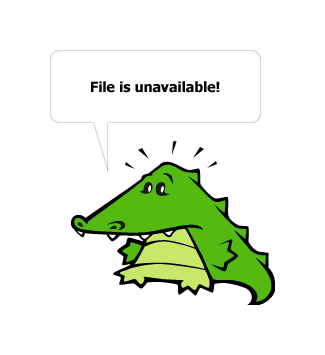Smart export from SVN using TortoiseSVN
For a long time I ran into the problem that in a good and correct program TortoiseSVN (in Russian, “toroyes es-Vi-eN”), there is no such necessary and desirable thing as exporting only those files that were affected by certain revisions. Especially you start to suffer when you have to perezalivat on the server the entire project, which includes quite weighty libraries and frameworks. You can, of course, not include libraries in Subversion, but this is a topic for another conversation.
And so, quite recently, one very good guru and friend quite unobtrusively told me how to solve this problem elegantly and beautifully.
The first thing we need to do is go to the folder where we have a working copy and call the context menu there. At this stage it is worth noting that you should already have the TortoiseSVN program installed, the use of which, in fact, does not require any supernatural skills.
So, in the pop-up context menu you need to select the item " TortoiseSVN " → " Show log ". You will see the following window:
')

In this window, you need to perform the following actions: select a revision, starting with which you will need to collect the modified and added files, hold down the Ctrl key , and select the revision to finish (in 90% of cases, this is the last revision). In general, in the end, two revisions should be highlighted. Now, we call the context menu of the following form:

In this very menu, select the item " Compare revisions ". Get the list of files that were affected by revisions between the selected ones. It looks like this:

It is not difficult to guess that in this window we select all the files, call the context menu and select the item " Export selection to ... ". Select the folder where to put the files, and click "OK".
All is ready!
Now update the site or make a resource patch is not difficult.
I hope I'm not the only one who did not know how to do it, and this information will be useful.
Unfortunately, I only use this program to work with Subversion, so I can not describe how to do this in another software. But, for sure, somehow you can. Perhaps umputun will tell you how it works in eSVN.
Comments are actively welcome.
And so, quite recently, one very good guru and friend quite unobtrusively told me how to solve this problem elegantly and beautifully.
The first thing we need to do is go to the folder where we have a working copy and call the context menu there. At this stage it is worth noting that you should already have the TortoiseSVN program installed, the use of which, in fact, does not require any supernatural skills.
So, in the pop-up context menu you need to select the item " TortoiseSVN " → " Show log ". You will see the following window:
')

In this window, you need to perform the following actions: select a revision, starting with which you will need to collect the modified and added files, hold down the Ctrl key , and select the revision to finish (in 90% of cases, this is the last revision). In general, in the end, two revisions should be highlighted. Now, we call the context menu of the following form:

In this very menu, select the item " Compare revisions ". Get the list of files that were affected by revisions between the selected ones. It looks like this:

It is not difficult to guess that in this window we select all the files, call the context menu and select the item " Export selection to ... ". Select the folder where to put the files, and click "OK".
All is ready!
Now update the site or make a resource patch is not difficult.
I hope I'm not the only one who did not know how to do it, and this information will be useful.
Unfortunately, I only use this program to work with Subversion, so I can not describe how to do this in another software. But, for sure, somehow you can. Perhaps umputun will tell you how it works in eSVN.
Comments are actively welcome.
Source: https://habr.com/ru/post/15124/
All Articles